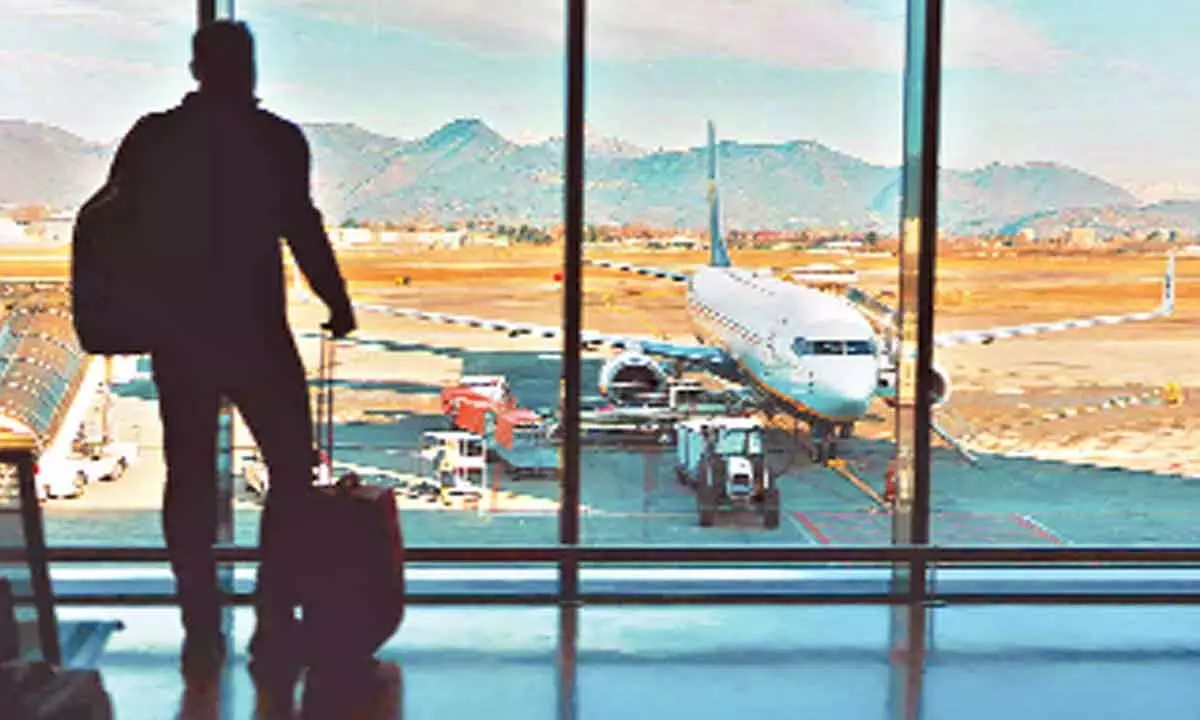Travel hiccups to continue until 2022 end
Over the next 2-3 years, the privatisation of Brownfield airports and increased investment in Greenfield airports will be core features of the sector
image for illustrative purpose

The move away from Covid-19-prompted travel restrictions has left many brands - and travellers - scratching their heads wondering what's needed from them before arriving at their destination. This worry is particularly amplified for cruise and international travellers, who may be reminded of stories about travellers stuck in quarantine in far-flung destinations from earlier in the pandemic.
September is one of the busiest months for travel in the U.S, and after months of news-making travel delays and cancellations, the government reported air travel complaints are up 270 per cent from pre-pandemic levels. In a new approach, the Biden administration launched a dashboard for passengers to check if airlines will provide meals, rebooking, or hotel rooms when flights are delayed or cancelled because of issues in the airlines' control. The Transportation Department unveiled the website after what it called an "unacceptable level" of flight disruption this year. The dashboard details which of the 10 major US - including Delta Air Lines Inc, American Airlines Group Inc, and United Airlines Holdings Inc - provide meal vouchers when passengers wait three or more hours, and which offer lodging if the delay is overnight.
The international travel bounce back is predicted to continue for the rest of the year with global airline seat capacity forecast to be back to 85 per cent of pre-Covid levels by the end of 2022, according to FCM Consulting's latest Global Quarterly Trend Report. The report reveals that the top 20 corporate airlines across the world are on the rebound, with a global average of 87 per cent of seats offered in 2022, versus 2019. 'There are now 141 countries completely open to the fully vaccinated. Our data shows the advance booking days globally averaged 26 days in Q2 in 2022, compared to 18 days in Q1 of this year,' says FCM Consulting general manager Felicity Burke.
She says the bounce back signifies the pent-up demand for people wanting to travel for both business and leisure. H2-2022 forecasts have the majority of global regions 10 per cent below 2019 seat volumes, but North America and South America are defying these stats, with both continents expected to be 4 per cent above 2019 levels by November this year.'
The New Zealand domestic market is forecast to be back to 79 per cent of pre-Covid levels for the full 2022 year. Similarly, across the Tasman, Australia is predicted to be back to 83 per cent domestically for the year.
'When it comes to airfares globally and across the APAC region, they have fluctuated across the board with average ticket purchase price increases on routes like Auckland to Melbourne but with reductions between Melbourne and Sydney for the past quarter.
'It's more critical than ever that corporate procurement teams have well-developed travel category plans and are working closely with their travel management company to ensure travellers get the best options.'
Domestic traffic in India is expected to reach 130-140 million passengers, perhaps remaining slightly lower than the FY20 levels. Meanwhile, international traffic is expected to reach 55-60 million passengers, around 20 per cent lower than pre-Covid level.
It is important to note that risks related to the resurgence of cases amidst Covid-19, fuel prices, the Russia-Ukraine conflict and other geopolitical events as well as the possibility of recessionary economic conditions globally remain key challenges to the recovery of the sector. Another strategic challenge that will plague the sector in 2022-23 is fundraising. Owing to this, some carriers may need to consider alliances or mergers to remain in the market.
Till fare caps and floors on domestic services are removed, the yields are expected to remain soft. In 2022-23, the cost headwinds related to fuel prices and currency depreciation may be compounded by yield pressures due to the relatively slow recovery of business travel. Therefore, 2022-23 is likely to be yet another year of losses at this stage. Even if conditions improve, the last two years' losses will weigh heavily on the industry. Structural risks in the sector may become more evident than in the previous couple of years.
Air India is likely to launch strong domestic low-cost carriers, making the company more competitive in the market. New entrants, including Jet Airways, without the burden of legacy issues, may pose a serious challenge to weaker carriers. Going forward, over the next two to three years, the privatisation of brownfield airports and increased investment in greenfield airports will be core features of the sector.

